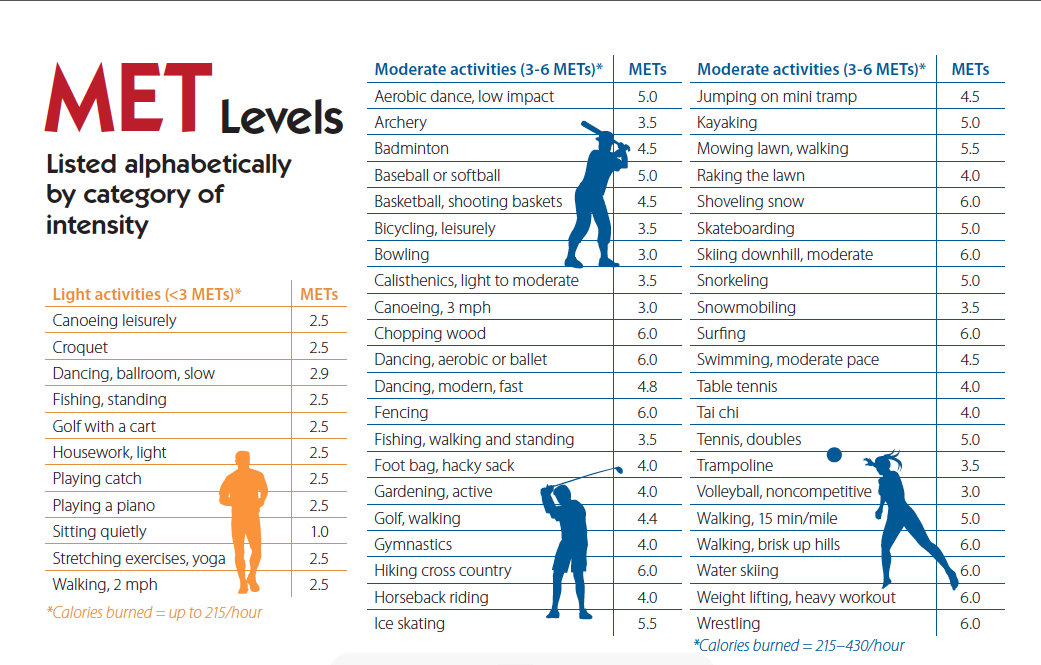|
SEARCH My Blog (Opens in new tab)
Each higher level of intensity improves your survival ratePhysical exercise guidelines generally recommend 300 minutes of moderately-intensive exercise a week as a good minimum. Doing any physical activity is better than none. But would you rather try a little harder and live longer? A research study conducted nearly 20 years ago and since cited by nearly 1000 other studies tested the prognostic capacity of exercise for mortality. The study tracked 6,213 men over 6 years, during which time there were a total of 1256 deaths. Here's what the data showed, which is exciting. Exercise capacity is the most powerful predictor of mortality, even among those with existing cardiovascular diseases risk factors. Exercise capacity is not relative capacity adjusted for age - that was not found to be a good predictor - but absolute fitness. In fact, the research assigned a number to the increasing value of exercise capacity. Each 1-MET increase in exercise capacity conferred a 12 per cent improvement in survival. (One MET is the energy expended in sitting quietly, which is equivalent to a body oxygen consumption of approximately 3.5 ml per kilogram of body weight per minute for an average adult.) More intense exercise requires us to use more energy, and hence rates higher in METS. The useful thing about METS is that we can compare the intensity of different exercises e.g. walking is 3 METS, jogging 6. The study grouped participants into three blocks of exercise intensity:
The average exercise intensity of the Above 8 METS group was 9.7 METS and 80% more of this group had survived compared to those in the low exercise group - the Below 5 METS. That's worth fighting for! Consistent with other studies of fitness and longevityThe result is consistent with many other studies:
What this means for you - level-up and live longerIt's a fantastic thing to know that there's a number to motivate you to up your exercise intensity. Especially since is it not too challenging to lift your level of effort by 1 MET. This chart shows the MET levels of various activities. You might be able to spot something that you currently like doing, and how to lift the intensity to the next level. Or, for example, here are other suggestions, with METS shown:
If you like classes, join an interval training class. Even the average Boxing class will be a step up if you aren't very active. Lifting your METS by 1 is as simple as not leaning on the handrails when using a treadmill, not taking 2 minutes between a few easy exercises, doing what the instructor asks at Spin, or adding slopes into your daily walk. Finally, if you are doing Yoga (3-METS) keep it up and add in another more intense exercise. I doubt that HIIT Yoga will help, although it does show how meaningless the phrase HITT has become ! Use your own perceived effort as a measureAlternatively use your own level of breathing to determine how hard you are exerting yourself, and keep doing the things you love. Just take it up a notch to be a little more breathless as often as you can. Use the perceived exertion scale (based on the 20-point Borg Scale of Perceived Exertion). 10-Point Levels of Perceived Exertion
Build up from where you perceive yourself to be today, to as many levels above that you can build into your regular exercise - for life. Remember every 1-MET lift in your exercise intensity that you maintain consistently will return you a 12 percent improvement in survival rate. Good luck, it’s worth it. PS If you have done the maths and are starting from inactivity, and plan to go to 10 METS of intensity, you might wonder of how you can get a 120 percent improvement in survival rate. Without going into too much detail the research analysis is based on a straight line linear regression. This underestimates the improvement moving from 1-MET of intensity to 2-METS, and overestimates the improvement from say 11 METS to 12 METS. This is good news both ways. If you are just starting to exercise then you will get disproportionate benefits (many research studies have validated this and it is the basis of public health activity guidelines). If you are already regularly exercising at 11 METS then you are well at the top of your survival statistics anyway. Follow me on Quora for more health and fitness tips.
If you valued this article >> Follow me Leave a comment >> Share it >> Stay healthy If you have any questions email me and I will get back to you. Latest: get your free customised fitness plan designed uniquely for you.
|
ChoicesSince I was diagnosed at 50 with Type 2 diabetes I've been learning how to do bone-building fitness training which lowers my age. You can too. It's your choice. Walter Categories
All
Archives
May 2023
|



 RSS Feed
RSS Feed 


